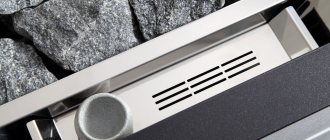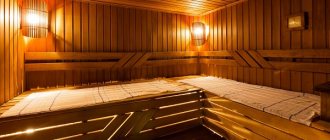In the past, it was considered a manifestation of the highest degree of skill among average swindlers to make money out of thin air. However, there is no need to become like immoral individuals. There is a completely law-abiding activity in converting hot air saturated with water vapor into money. This is a public bath. Yes, yes, premises, water, a heater, hospitality and no fraud. Is it really a goldmine? Is it that simple? Let's figure it out.
At the dawn of history
Since ancient times, since the times of the sages of Ancient Greece, public baths have been the concentration of giants of thought and the fathers of democracy there. It was there that, in addition to the adoption of hygienic and general health procedures, heated and, at times, fierce disputes arose regarding the meaning of existence and the essence of the mortal world.
There, great discoveries in the fields of arithmetic, physics and geometry were often born. The good initiative of the Greeks was picked up by no less great Rome. The Romans gradually began to introduce mass baths for citizens of the empire. The famous city baths of Diocletian were able to simultaneously accommodate about 3,000 people.
In addition to the bath areas themselves, there were lecture halls, gymnastics, playgrounds and other useful bonuses. Not bad at this time, isn’t it?
The water supply system, advanced at that time, was provided by the abundant flow of aqueducts and included almost full-fledged water supply and sewerage. The benefits of ancient Roman civilization were successfully destroyed by the barbarians in 537, who considered such achievements unnecessary. From this time on, the decline of the classical Roman bath began.
It was remembered only in 1856, when the Irish doctor Richard Barter, in collaboration with the famous popularizer of Turkish baths in the British Isles, David Urquhart, built classic Roman baths, but somewhat modernized, on the Irish hills near Blarney.
Due to the introduction into the design of elements of Irish dry-air baths with their perfect air supply and ventilation systems, and stoves heated by inexpensive, but extremely high-calorie fuel - British Cardiff coal.
The public liked the baths so much that they immediately moved from the islands to the continent and from there began their triumphal march across Europe.
Sandunovo baths - the pride of the empire
In Russia, the bath industry loudly declared itself in 1808 with the opening of the legendary Sandunovsky baths, or Sandun, in common parlance. It was there, in the floodplain of the Neglinnaya River, that an establishment was formed that has retained its main profile to this day.
Moscow poured into them, especially into the men’s and women’s “noble” departments, arranged with amenities previously unheard of in Moscow: a dressing room with a mirrored hall, with clean sheets on soft sofas, well-trained servants, experienced bath attendants and bath attendants. The dressing room became a club where the most diverse society met - everyone found here their own circle of acquaintances, and, moreover, a buffet with all kinds of drinks, from kvass to Moët and Aya champagne. Both Griboyedov's and Pushkin's Moscow visited these baths, the one that gathered in the salon of Zinaida Volkonskaya and in the English Club.
Reporter Gilyarovsky, a great connoisseur of metropolitan life, wrote in his book “Moscow and Muscovites”.
It was this circumstance, a certain club component and innovation that created the name and well-deserved fame for the Sandunov Baths.
It is worth noting the technical equipment. After reconstruction at the end of the 19th century, water was delivered by steam pumps through a separate drinking water supply from a water intake on the Moscow River and a deep artesian well. In addition, there was electric lighting, which was rare at that time. The decoration was amazing and was made by the best craftsmen from European materials. The pricing policy also remained reasonable and balanced, general departments were priced from 5 to 50 kopecks, individual rooms and apartments from 60 kopecks to a considerable 5 rubles in those well-fed times.
Age of Industrialization
In the country of victorious socialism, the city bathhouse continued to play a very important role, as an effective means of personal hygiene and simply as an iconic public platform. Few houses could boast of having not only a bathroom, but also running water and sewerage as such.
The rapidly growing industrial centers in the European part of the country required workers, but could not always provide their owners with at least some living space. Old barracks and landowner stables were also used for settlement. The dormitories under construction were also not always famous for their relative comfort. Under these conditions, factory baths came to the aid of city baths.
Childbirth in a bathhouse
The tradition of giving birth in a bathhouse was widespread in ancient Rus'. The main reason for this was the cramped conditions of the peasant premises. In addition, it was believed that when giving birth in a bathhouse, a woman was purified by water not only physically, but also mentally. Today, childbirth in a bathhouse has acquired a new meaning and has become a popular home birth. Expectant mothers, being confident that the conditions at home are the best conducive to a quick and full birth, refuse the services of maternity hospitals and give birth at home, including in a bathhouse, sauna, etc.
Undoubtedly, home birth has its advantages . This:
- familiar environment;
- minimum medical intervention;
- maximum attention to the woman giving birth;
- the ability to cut the umbilical cord after a while;
- the baby's presence on the mother's chest from the first seconds.
However, such births have a number of serious disadvantages :
- the birthing area is unsterile;
- there is no prompt medical care and service;
- there is a danger of complications, especially during the first birth.
Public baths as a business
If there is a certain demand for public baths, then it is worth thinking about ensuring supply. Why such a business can be attractive:
- Almost every city apartment is equipped, to one degree or another, with a bath or shower, but an apartment that has a full-fledged steam room is a rarity;
- Great traffic and accessibility makes the owner of such a bathhouse a recognizable and socially significant person within the city. And this is a very considerable and significant trump card;
- As a rule, such establishments as a municipal bathhouse have a large list of related services, the income from which can be equal to or exceed the main one. For example, the construction of a mini-brewery or just a point selling fresh beer will have sales volumes that are an order of magnitude greater than just a point selling draft beer. Moreover, the selling price may also differ from the generally accepted ones, somewhat larger;
- The main costs for the implementation of such projects are of the capital type and are incurred during the construction and equipment of the institution. The current costs of providing a bathhouse with heat and water are significantly lower and can be further reduced through the use of modern energy-saving technologies and competent engineering solutions;
- In a number of settlements, specialized structures remained from the Soviet era, designed specifically for the provision of bathing services to the population. Sometimes, all you have to do is wrap old candy in a new beautiful and shiny wrapper for the establishment to be revived. At the same time, a lot of money is saved, which is shown in accounting documents as capital investments;
- With the right approach, excess and recycled heat and wastewater can be used to power a related business, such as a greenhouse or mushroom farm;
- On the basis of the baths, you can develop unique bathing complexes and combine them with a Swedish laundry and a budget fitness center;
- Mass scale and accessibility are the main strengths that should ensure such an establishment’s popularity and profitability;
- In a public bath there should be no excesses, both in terms of interior decoration and in terms of the list of services provided, you need quality and an affordable price tag;
- The rules for visiting a public bath should be simple and clear, but they should not diverge from the principles of elementary morality. This is what can, over time, turn the establishment into a center for the cultivation of family values and a place for leisure activities during the weekend. Although, in the minds of the average person, a bathhouse is usually associated with a nest of debauchery. It's time to break this harmful stereotype.
However, in business, not everything is always smooth, there are also pitfalls. SanPiN 982 It’s also worth saying about them:
- The bathhouse is a place of close attention from regulatory services. Starting from the sanitary station and fire inspection and ending with the knights of the cloak and dagger, this is as if from old memory and tradition. Interaction, or more precisely, constructive interaction between a businessman and supervisory authorities is a whole art, on the verge of a game in which the winnings are not always on the side of the businessman;
- The bathhouse involves the use of elevated temperatures and hot water, and the more people pass through it, the higher the likelihood that some hypertensive patient or heart patient arriving for recovery will have an attack right in the establishment. You can’t require a doctor’s certificate with permission from everyone, and you can’t personally assign the same doctor to everyone. Proceedings regarding the accident and possible compensation can greatly undermine the financial health and image of the establishment;
- The condition of water supply and drainage communications and the quality of supplied water in our Fatherland is a long-standing and painful topic. Large volumes and high demands on the water used force either the use of tap water, the limit for which is limited, or the establishment of an autonomous water supply by organizing a well or a point for deep purification of industrial water. Maintaining the sewerage collector in proper condition is also not an easy task, and coordination and arrangement of your own branch is fraught with enormous costs and bureaucratic red tape.
Bathing with a child: psychological aspects
The main difficulty in the family’s decision to go wash is the children’s perception of this event. Of particular concern is the impact of such pastime on the child’s psyche. Psychologists advise not to undress in front of children of the opposite sex after they reach the age of seven. Until then, it is permissible to be naked in front of children, since for the time being they are guided only by the research interest of this issue. From 7 years of age and older, children begin to gradually develop psychosexual libido and desire. When seeing a naked mother, a boy may experience an involuntary visual fixation on her body as an object of desire. In a situation with girls, there may not be such emotions towards dad. But there is a high risk that a naked father will easily frighten the baby with the sight of his genitals.
Psychologists admit similar behavior in families practicing nudism. But in this case, the child needs to be separately and clearly explained that the human body is very beautiful by nature and should be treated as the best creation. Without careful explanation, you should not walk around naked in front of children, so as not to excite their developing sexual desire. A trip to the bathhouse as a family can play a positive educational role. Our ancestors had a custom for older men to take boys with them to the steam room, so that they would begin to become familiar with masculinity from an early age. This is how their male identification occurred.
Which heat is the most economical?
When solving a problem related to choosing the type of heating, it is worth remembering the school physics course for the seventh grade of a secondary school.
Comparative table of calorie content of various types of mineral fuels, wood and renewable types of energy carriers in kJ:
| Type of fuel | Minimum value | Maximum value |
| Brown coal | 7500 | 21000 |
| Coal | 21000 | 30000 |
| Shtyb private 0-25 | 17000 | 27000 |
| Graded coal coke | 27000 | 31000 |
| Briquetted peat, moisture content 16-18% | 13000 | 16000 |
| Hardwood, 18% moisture content | 14700 | 18500 |
| Cereal straw, moisture content up to 20% | 12000 | 14900 |
| Boiler fuel oil | 41000 | 42750 |
| Natural gas according to GOST | 31000 | 31000 |
Important! Briquettes and pellets made from cereal straw and wood waste can have a calorific value slightly higher than the nominal values declared for wood and straw in their pure form, due to more optimal combustion modes of this fuel in specialized boilers.
Electricity is a separate item.
Practical example:
The water in the incoming main has a temperature of 9 degrees Celsius, the heating element has a power of 25 kW, a water tank with a capacity of 1000 liters of water with a standard thermal insulation scheme and the same standard level of heat loss to the environment. The water temperature in the storage tank and outgoing line must be at least 50 degrees Celsius.
A simple thermal calculation shows that with an efficiency of the heating device of 89%, taking into account heat loss, the specified volume of water will be heated to the specified value within 1.986 hours. Electricity consumption will be 48.686 kW. Calculating the cost is not difficult if you multiply this figure by a specific electricity tariff.
Even a quick analysis indicates that heating with electricity is not the best option. Coal, gas and fuel briquettes have higher fuel efficiency and economic feasibility. However, the use of mineral and organic fuel requires:
- Organization of smoke removal.
- Removal and disposal of combustion waste and slag. A fairly costly item that does not apply to the use of natural gas and partly boiler oil.
- Coordination and installation of gas communications and organization of a warehouse for storing an emergency supply of solid fuel.
- Logistics and transportation costs for fuel delivery and combustion waste disposal.
- The combustion processes of mineral fuels are less controllable and can be fine-tuned. To a lesser extent, this statement is true for natural gas and fuel oil, where automatic control systems have long been developed.
A word from Experienced! The use of unknown grades of coal, and especially coke, in solid fuel boilers requires a balanced approach. Coke and coking coals of grades K, OS, Zh, with their undeniable caloric content and, as a result, energy efficiency, can provoke burnout of the grate due to the critical temperature regime in the firebox. The use of gas long-flame coals, lean coals of the semi-anthracite group and anthracites is much more predictable and ultimately justified.
Contraindications - what should not be done in the bathhouse?
We are accustomed to believing that the bathhouse is absolutely harmless and has only a beneficial effect on the human body. However, visiting the steam room has certain restrictions, neglect of which can be harmful to health.
So, you can’t visit the bathhouse if you have:
- increased body temperature;
- oncology;
- cardiovascular diseases;
- previous stroke/heart attack;
- peptic ulcer;
- inflammatory processes on the skin;
- acute inflammatory diseases of the ears and eyes;
- epilepsy;
- tuberculosis.
Headaches after a bath can also be a reason for restriction. To find out the cause of the problem, you should definitely consult a specialist.
for a pregnant woman, since an increase in the mother’s body temperature can lead to disruption of metabolic processes in the fetus’s body and disruption of the central nervous system.
Whether children can go to the bathhouse is decided by parents individually. When making a decision, it is worth considering that the child’s body is much more sensitive to high and low temperatures. In principle, if the child is healthy, he can take bath procedures, but always under the supervision of adults. Pediatricians consider children from three years of age to be the optimal age for the first visit to a bathhouse, and the duration of the procedure should not exceed more than two minutes.
Second run
After resting for 10–15 minutes, you can make a second entry into the steam room. At the same time, do not forget to wipe yourself dry.
The second run lasts only 5–10 minutes. Afterwards, the body can be rubbed with coffee grounds or finely ground sea salt to free the skin of dead skin cells.
Many people like to use corn flour or oatmeal with salt and honey as a soft peeling - this mixture is brewed with boiling water during the first use, and used after the second.
If you want to remove all the “toxins” from the skin as completely as possible, then after peeling you need to make a blue clay mask for the whole body.
All these manipulations deprive the skin of its protective layer, so you can immediately help it with recovery by smearing your face, neck and décolleté with a mixture of cottage cheese, yolk, grapefruit juice and honey.
Girls usually indulge in such procedures for beauty.
Breathe carefully
Yes, in a steam room you can get a burn to the respiratory tract, this is not uncommon. It’s difficult to do this in a sauna and hammam; the temperatures there are low. But in saunas with more extreme temperatures, taking a deep breath (and keeping your mouth and nose uncovered) can cause harm to yourself. The burn manifests itself as bronchospasm (roughly speaking, you cannot take a breath). You need to immediately leave the steam room and breathe in fresh air, then rinse your mouth and nose with cool water. In general, to avoid trouble, it is better to enter a well-heated steam room with your nose and mouth covered with your palm or towel.











